Photo: Kevin Winter/Getty Images
![Eminem, The Slim Shady LP [Expanded Edition]](https://i8.amplience.net/i/naras/eminem-the-slim-shady-lp-expanded-edition-gettyimages-109065488.jpg.jpg)
Eminem at the 53rd GRAMMY Awards in 2011
news
Eminem To Release Expanded Editions Of 'The Slim Shady LP' For Its 20th Anniversary
The 30-track release will feature 10 new bonus tracks and will be available in three-LP vinyl and two-CD editions
Hi, his name is, chka-chka, Slim Shady. Eminem, the 15-time GRAMMY-winning rapper, is this year celebrating the 20th anniversary of his 1999 album, The Slim Shady LP, with an expanded release of the explosive project.
Set for release Dec. 13 on Aftermath/Interscope Records, the 30-track The Slim Shady LP [Expanded Edition], available in three-LP vinyl and two-CD editions, will feature 10 new bonus tracks, including rarities, a cappellas, freestyles, and instrumentals, in addition to the album's original 20 tracks. The physical vinyl and CD editions follow the digital and streaming release of the expanded edition from this past February.
<iframe width="620" height="349" src="https://www.youtube.com/embed/sNPnbI1arSE" frameborder="0" allow="accelerometer; autoplay; encrypted-media; gyroscope; picture-in-picture" allowfullscreen></iframe>
Read: Why Eminem's "Lose Yourself" Stands Tall: For The Record
Originally released in February 1999, The Slim Shady LP, the rapper's second artist album and his major-label debut, is considered Eminem's breakthrough project, elevating him from underground rapper to breakout pop star. The album, which debuted at No. 2 on the Billboard 200 chart, has since gone four-times-platinum in the U.S. The Slim Shady LP went on to win the GRAMMY for Best Rap Album and Best Rap Solo Performance, for album track "My Name Is," at the 42nd GRAMMY Awards, held in 2000.
Pre-orders for The Slim Shady LP [Expanded Editions] from Eminem on vinyl and CD are available now.
Find Out Who's Nominated For Best Rap Album | 2020 GRAMMY Awards
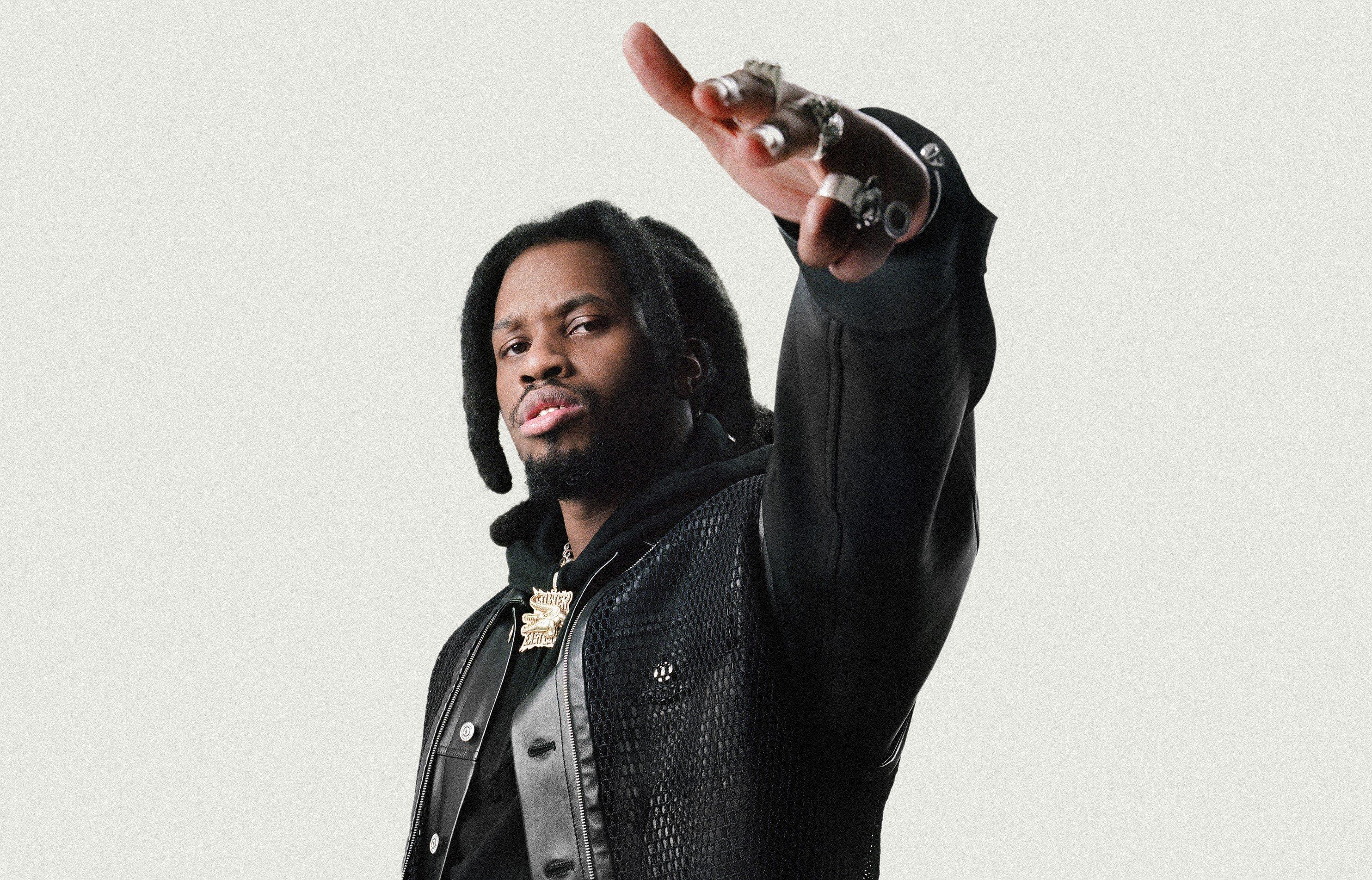
Photo: Giovanni Mourin
interview
Denzel Curry Returns To The Mischievous South: "I've Been Trying To Do This For The Longest"
Over a decade after he released 'King of the Mischievous South Vol. 1,' Denzel Curry is back with 'Vol. 2.' The Miami rapper details his love of Southern hip-hop, working on multiple projects, and the importance of staying real.
Denzel Curry isn’t typically one for repetition. His recent run of critically acclaimed projects have all contrasted in concept and musicality.
The Miami Gardens native has cascaded through boom-bap, synth-soaked trap metal, and cloud rap throughout his catalog. But on his upcoming project, King of the Mischievous South Vol. 2, Curry returns to the muddied, subwoofer-thudding soundscape that he captured on the first installment back in 2012.
Curry was just 16 when he released King of the Mischievous South Vol. 1 Underground Tape 1996]. "I was a kid, man," Curry tells GRAMMY.com. "I was just trying to emulate my favorite rappers at the time who really represented the South. That was pretty much what I was on at the time – the Soulja Slims, the No Limits, but mostly Three 6 Mafia. And then I just put Miami culture on top of that."
Curry first explored the rough-cut "phonk" of Southern acts like DJ Screw and Pimp C as a teenager. His first mixtape, King Remembered Underground Tape 1991-1995, caught the attention of then-rising rapper and producer SpaceGhostPurrp. He shared Curry’s project on his social media accounts, making him an official member of South Florida’s Raider Klan.
Read more: A Guide To Southern Hip-Hop: Definitive Releases, Artists & Subgenres From The Dirty South
The now-defunct group is well behind Curry, who’s ascended from the infancy of his early SoundCloud days to mainstream success. But the rapid-fire delivery and hazy, rough-cut sounds of early Southern rap are still soaked into his musical fibers.
Reignited by the same musical heroes that led to Vol. 1, Curry is comfortable in old sonic form. Vol. 2's lead singles "Hot One" (feat. A$AP Ferg and TiaCorine) and "Black Flag Freestyle" with That Mexican OT fully capture the sharp-edged sound that stretched from Port Arthur, Texas to the Carolinas.
The rapper wanted to go back to the KOTMS series nearly a decade ago, but other projects and outside ventures derailed his return. "I tried to do this thing multiple times," Curry tells GRAMMY.com. "I remember revisiting a [social media post] from 2015 that was like, ‘KOTMS Vol. 2055 is now going to be called Imperial.’ I’ve been trying to do this for the longest."
A string of bouncy, syrup-pouring, and playalistic Southern trap songs led him back to familiar grounds. The new 15-song capsule features Juicy J, 2 Chainz, Project Pat, That Mexican OT, Maxo Kream, and others inspired by the same pioneers that fall below the Mason-Dixon line.
GRAMMY.com sat down with Curry before the release of King of the Mischievous South Vol. 2 on July 19. The "Ultimate" rapper revealed his "Big Ultra" persona, his ability to crank out hits from his bedroom, and his recent discoveries being "outside."
This interview has been lightly edited for clarity and length.
What inspired you to revisit the 'King of the Mischievous South' series?
I was making two projects at once, and there was a through-line from the second half of the project. The second one I was working on kind of just manifested itself into what it is today, 12 years later. And it’s called King of the Mischievous South Vol. 2 because it has the same sonics as the first one.
You mentioned Three 6 Mafia being a big inspiration for Vol. 1. But what about Vol. 2?
The first KOTMS was obviously Three 6 Mafia, and then Lord Infamous was really the person I looked up to, God rest his soul. I get my rap style from him — the rapid flows and stuff like that. You can even hear it on "Walkin’" and "Clout Cobain." But since I’m from Miami, I’m talking about stuff that predominantly happens in Miami. And I’m influenced by Soulja Slim, Master P, DJ Screw, UGK, Trina, Trick Daddy, and Rick Ross.
How did you juggle the two different projects at once?
When I wasn’t working on one project, I was working on the other one. Sometimes I would be working on the same two projects on the same day. I was like, If this one won’t see the light of day until next year, this one has to hold fans over. And the one that was supposed to hold fans over ended up having a crazy through-line.
What were the studio sessions like?
When it came down to the production, I was just making these songs on the fly. A couple came out of Ultraground sessions, but the majority of the songs were made in my bed — just how it was with the first one. "Hot One" was made in my house downstairs, and "Hit The Floor" was made in a random room in an AirBnb. And I think the rest of the songs were made in an actual studio.
I was just flowing, doing my thing, and figuring things out. I was working on one project, and when I wasn’t getting called back to the studio, I was working on another one on the side. The grind didn’t stop.
Was there an element or feature that you really wanted to explore?
I just knew I wanted certain rappers to be featured on [project]. When I was working on "Set It," I originally wanted PlayThatBoiZay. But he didn’t get the record done or whatever the case may be. So, I sent it to Maxo Kream, and he ended up just doing it. And when I made "Wish List," I got Armani White on it. Me and him came off of doing "Goated," so getting that record done was really simple. He pulled up to the studio and he said, "This is tight," and then jumped on the record.
Some stuff didn’t make the cut because we couldn’t get certain people. But the majority of the stuff that made the cut, we were like, "Yes, we did that." Then having people like Ski Mask the Slump God, 2 Chainz, Project Pat, and Juicy J — all these guys played a role. I’m getting people from the South, whether they’re from Texas, Florida, or the Carolinas. And even people outside of the South, like A$AP Ferg and Armani White, they’re all influenced by the same artists.
Learn more: A Guide To Texas Hip-Hop: Definitive Releases, Artists & Events
Your persona on the album, "Big Ultra." Break that down for me.
This is how the name came about — my boy’s nickname is Mr. Don’t Fold. It’s kind of a play on "Mr. Don’t Play," so we came up with "Big Ultra" because I’m doing "ultraground" stuff. It wasn’t on some superpower s—, it’s just me, pretty much. It’s how I wanted to be presented on this tape. It’s just me at the end of the day, it’s no persona.
You’ve been in the rap game for a while. Do you consider yourself a veteran?
I think I’m mostly in a formation period because my best years haven’t even happened yet. I feel like I’m just getting my reps in, preparing myself for my 30s. You know, going through the bulls—, having good times, having bad times.
By the time I get to 30, 35, and 40 — God willing — I could have a fruitful career and not be backtracked by dumb s—. I see myself as someone with a lot to offer because I’m still young.
Do you care about garnering more fame or acclaim? Or is there no need for it?
All my projects are critically acclaimed. The main thing is staying good at what I do. That comes with a lot of effort, a lot of studying, and a lot of work. I take pride in my job and I have fun making music.
I think the hardest part is putting myself out there and being visible. I’m starting to understand that’s what I had to do. I got asked the same question five times in a row about when my album was dropping. I’ve been saying July 19 for the longest. Like, people really haven’t been paying attention? C’mon, bro.
What do you feel is the next step?
I’m just trying to be more visible where the younger generation is at. Most people know me for "Ultimate," "Clout Cobain," or the [XXL Freshman Class] Cypher if I’m being totally real with you. But in due time, everybody has blessings in certain parts of their career. And I’ve been blessed to have a career this long.
All I have to do is just deliver, be real with myself, and do what I have to do. I got to lean into being outside. I didn’t know who messed with me or who liked my stuff until I started going outside and talking to people. You never know who rocks with you until you're outside.
As far as the music and experience, where does the album rank for you?
I didn’t think about where I’d rank this. We had a whole decade of producing great records, and people look forward to the album experience more than the single when it comes to me. This is what it is, and I just want people to enjoy it. It’s not something to put too much effort or thought into. It’s something you can bump into the club, or you could go to a show and turn up to it. That’s where I’m at with it.
Are there any other sounds or genres you want to explore?
It’s going to happen when it’s supposed to happen naturally. But I do want to explore pop and R&B a year from now. I want people to be able to sing my songs and stuff like that.
Latest Rap News & Music

Ice Spice Is The Drill Queen On 'Y2K!': 5 Takeaways From Her Debut Album

Watch Young MC Win Best Rap Performance In 1990
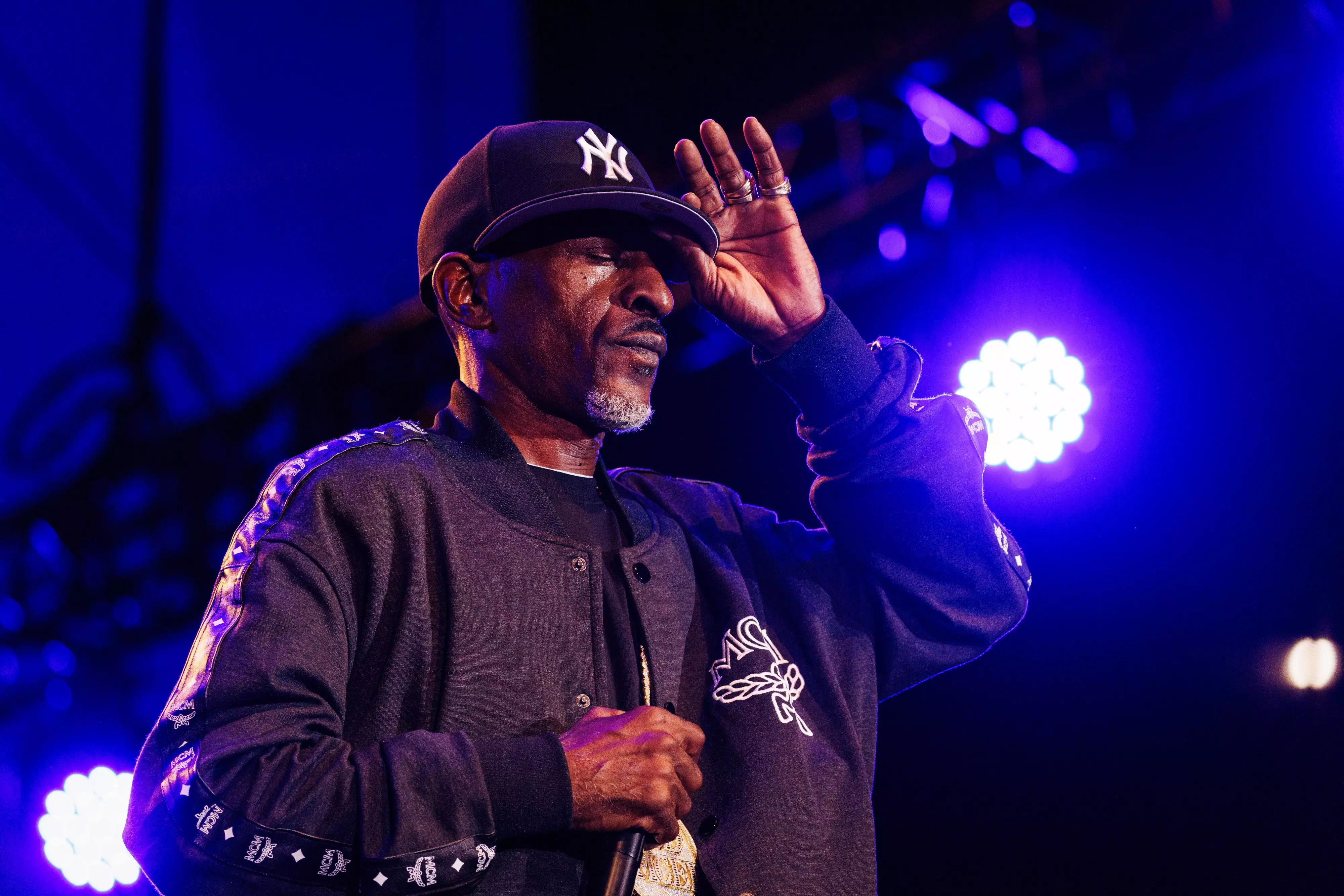
On Rakim's 'G.O.D's Network (REB7RTH)' The MC Turned Producer Continues His Legacy With An All-Star Cast
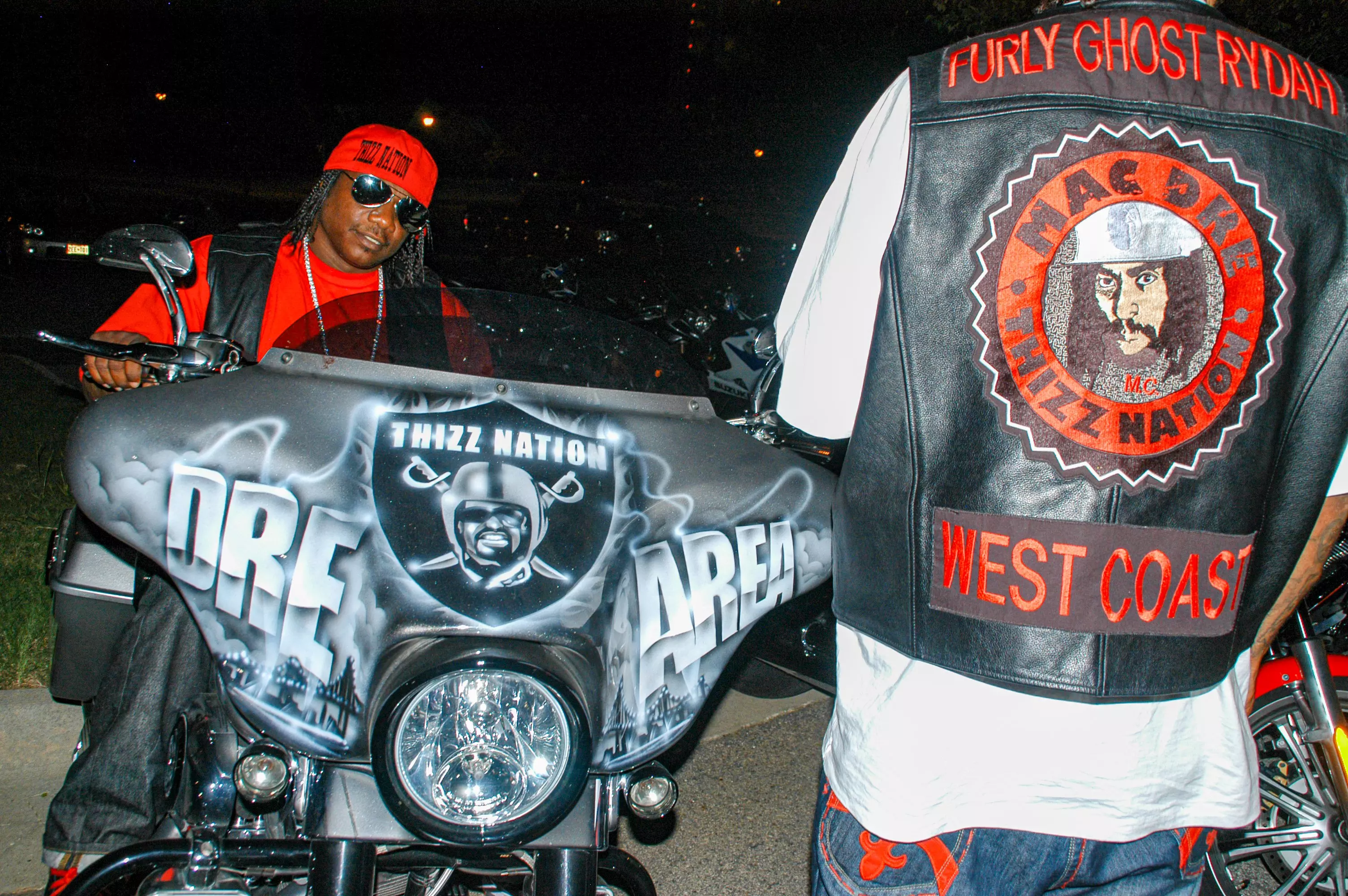
5 Ways Mac Dre's Final Living Albums Shaped Bay Area Rap
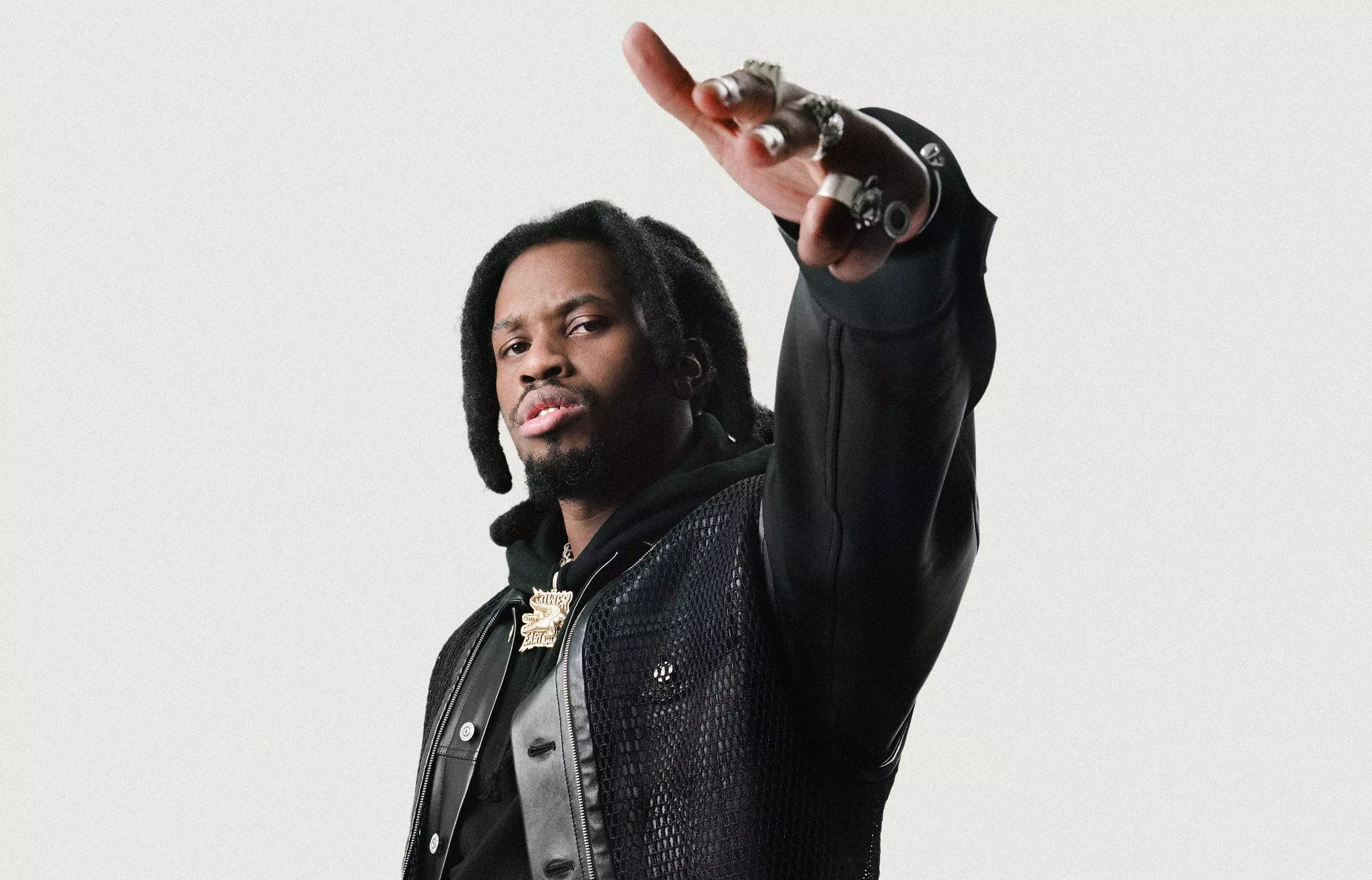
Denzel Curry Returns To The Mischievous South: "I've Been Trying To Do This For The Longest"
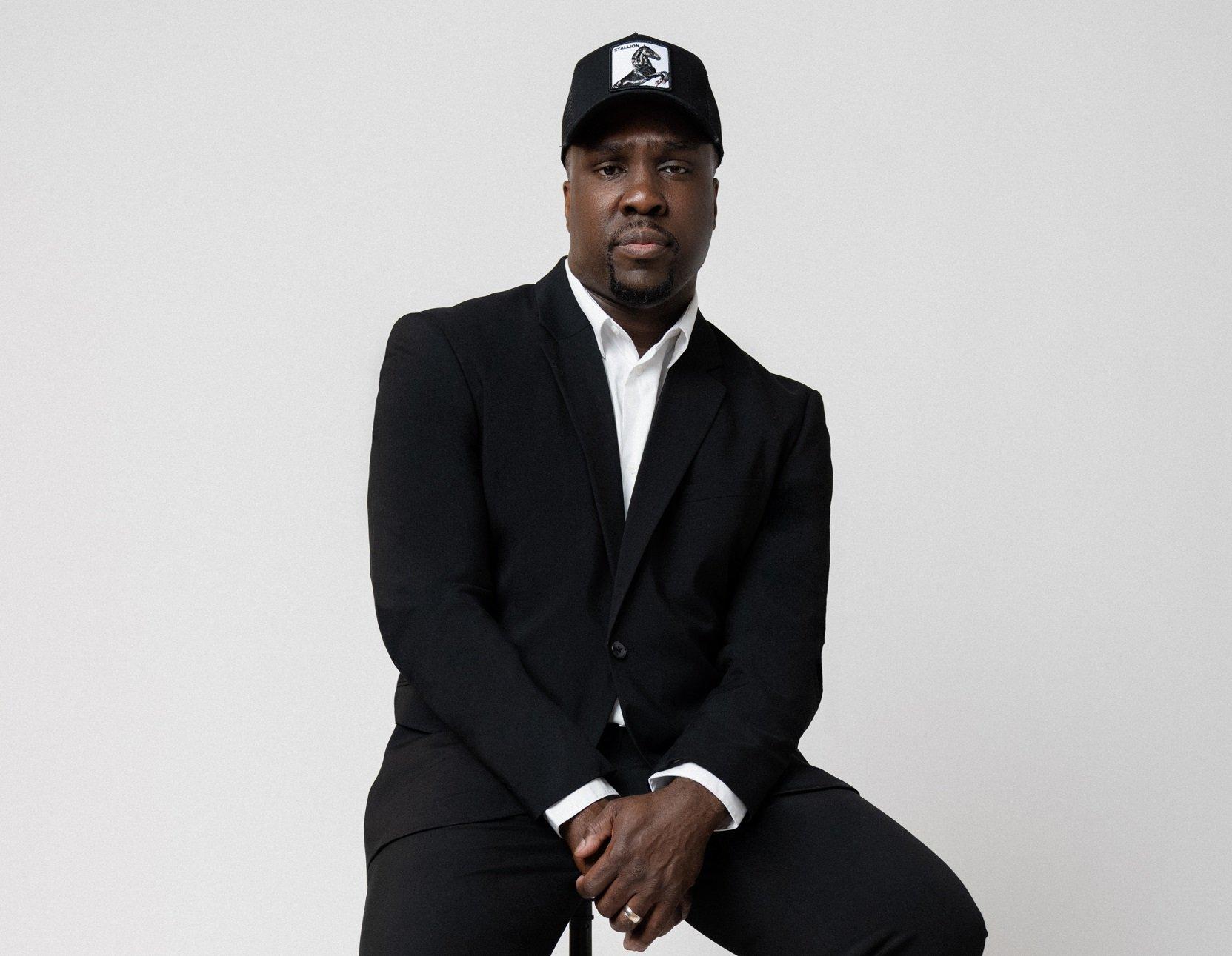
Photo: Oye Diran
interview
Meet Derrick Hodge, The Composer Orchestrating Hip-Hop's Symphony
From Nas' 'Illmatic' to modern hip-hop symphonies, Derrick Hodge seamlessly bridges the worlds of classical and hip-hop music, bringing orchestral elegance to iconic rap anthems.
Over the last 50 years, hip-hop culture has shown it can catalyze trends in fashion and music across numerous styles and genres, from streetwear to classical music. On June 30, Nas took his place at Red Rocks Amphitheater in a full tuxedo, blending the worlds of hip-hop and Black Tie once again, with the help of Derrick Hodge.
On this warm summer eve in Morrison, Colorado, Nas performed his opus, Illmatic, with Hodge conducting the Colorado Symphony Orchestra. The show marked a belated 30-year celebration of the album, originally released on April 19, 1994.
As Nas delivered his icy rhymes on classics like "N.Y. State of Mind," "Memory Lane (Sittin' in da Park)," and "Halftime," the orchestra held down the beat with a wave of Hodge's baton. The winds, strings, and percussion seamlessly transitioned from underscoring Nas's lyrics with sweeping harmonic layers to leading melodic orchestral flourishes and interludes. For the album's final track, "Ain't Hard to Tell," the orchestra expanded on Michael Jackson's "Human Nature," expertly sampled originally by producer Large Professor.
Derrick Hodge is a pivotal figure in modern music. His career spans writing and performing the famous bassline on Common's "Be," composing for Spike Lee's HBO documentary "When the Levees Broke: A Requiem in Four Acts," and his own solo career that includes his latest experimental jazz album, COLOR OF NOIZE. Hodge also made history by bringing hip-hop to the Kennedy Center with orchestra accompaniments for Illmatic to celebrate the album's 20th anniversary in 2014.
"That was the first time hip-hop was accepted in those walls," Hodge says sitting backstage at Red Rocks. It was also the first time Hodge composed orchestral accompaniments to a hip-hop album.
Since then, Hodge has composed symphonic works for other rappers including Jeezy and Common, and is set to deliver a symphonic rendition of Anderson .Paak's 2016 album, Malibu, at the Hollywood Bowl in September.
Hodge's passion for orchestral composition began when he was very young. He played upright bass by age seven and continued to practice classical composition in his spare moments while touring as a bassist with Terence Blanchard and Robert Glasper. On planes. In dressing rooms. In the van to and from the gig.
"It started as a dream. I didn't know how it was going to be realized. My only way to pursue that dream was just to do it without an opportunity in sight," Hodge says. "Who would've known that all that time people were watching? Friends were watching and word-of-mouth."
His dedication and word-of-mouth reputation eventually led Nas to entrust him with the orchestral arrangements for Illmatic. He asked Hodge and another arranger, Tim Davies, to write for the performance at the Kennedy Center.
"[Nas] didn't know much about me at all," Hodge says. "For him to trust how I was going to paint that story for an album that is very important to him and important to the culture, I have not taken that for granted."
Read more: How 'Illmatic' Defined East Coast Rap: Nas’ Landmark Debut Turns 30
Those parts Hodge wrote for the Kennedy Center are the same parts he conducted at Red Rocks. Over a decade later, he channels the same drive and hunger he had when he was practicing his compositions between gigs. "I hope that I never let go of that. I feel like these opportunities keep coming because I'm approaching each one with that conviction. Like this could be my last."
Before this latest performance, GRAMMY.com spoke with Hodge about bridging the worlds of classical and hip-hop, influencing the next generation of classical musicians, and how his experience as a bassist helps him lead an orchestra.
Throughout history, orchestral music has been celebrated by the highest echelons of society, whereas hip-hop has often been shunned by that echelon. What is it like for you to bring those two worlds together?
I love it. I've embraced the opportunity since day one. I was a young man showing up with Timberlands on and cornrows in my hair, and I knew the tendency to act and move in a certain perception was there. I knew then I have to represent hope in everything I do. I choose to this day to walk with a certain pair of blinders on because I feel like it's necessary. Because of that I never worry about how the classical world perceives me.
Oftentimes I'll stand before them and I know there may be questions but the love I show them, what I demand of them, and how I show appreciation when they take the music seriously…almost every situation has led to lifelong friendships.
I believe that's been part of my purpose. It's not even been to change minds or change perceptions. In serving the moment, even when people have preconceptions, they're in front of me playing music I wrote. How do I serve them best? How do I bring out the best in them just like I'm trying to bring out the best in the storyline of a hip-hop artist that may not relate to their story at all? The answer is just to be selfless. That's eliminated the distraction of trying to convince minds.
With that unifying principle, would you consider conducting the orchestra the same thing as playing bass with Robert Glasper?
The way I try to be selfless and serve the moment, it's no different. Maybe the skillset that's required. For example, conducting or working within a framework of composed music requires a certain way of making sure everybody's on the same page so we can get through these things on time and keep going. But I serve that moment no differently than when myself and Robert Glasper, Chris Dave, Casey Benjamin RIP, are creating a song in the moment.
I actually don't even think about how one thing is affecting the other. I will say the beauty of the bass and the bassists that have influenced me — from Ron Carter to the great Marcus Miller, Victor Wooten — is the way they can stand out while never abandoning the emotion of the moment. Remembering what is perceived as the role of the bass and how it glues things in a unique way. Harmonically and rhythmically. Being aware of the responsibility of being aware of everything.
I think that's one thing that's carried over to orchestrating and thinking about balances and how to convey emotion. I think some things are innate with bassists. We're always navigating through harmony and having a conversation through a lens of placement with drums. Placement with the diction if they're singers or rappers. There are a lot of decisions bass players are making in the moment that we don't even think about. It's just secondhand. But it's how are we serving what's necessary to make the conversation unified. I think that's one thing that's served me well in composition.
What's one song you're particularly excited to dive into for the Anderson .Paak arrangements?
So I'm intentionally not thinking in that way because we decided to treat it like a movie. Start to finish no matter what. With that in mind, I'm trying to approach it as if the whole thing is an arcing story because I didn't realize the succession of how he placed that record was really important to him.
**Hip-hop is often a very minimalist genre while an orchestra is frequently the opposite with dozens of instruments. How do you maintain that minimalist feel when writing orchestra parts for hip-hop albums like Illmatic?**
I'm so glad you asked that because that was the biggest overarching thing I had to deal with on the first one. With Nas. Because Illmatic, people love that as it is. Every little thing. It wasn't just the production. Nas's diction in between it, how he wrote it, how he told the story, and the pace he spoke through it. That's what made it. So the biggest thing is how do I honor that but also try to tell the story that honors the narrative of symphonic works? [The orchestra is] fully involved. How do I do things in a way where they are engaged without forcing them?
Illmatic was a part of my soundtrack. So I started with the song that meant the most to me at that time: "The World is Yours." That was the first piece I finished, and I emailed Pete Rock and asked "How is this feeling to you?" If the spirit of the song is speaking to him then I feel like this is something I can give to the people no matter how I feel about it. And he gave the thumbs up.
So instead of overly trying to prove a point within the flow of the lyrics, how do we pick those moments when the orchestra is exposed? Let them be fully exposed. Let them tell a story leading into that. Make what they do best marry well into what Nas and the spirit of hip-hop and hip-hop sampling do best. And then let there be a dance in between.
That first [Illmatic] show was a great experiment for me. I try to carve out moments whenever I can. Let me figure out what's a story that can combine this moment with this moment. That's become the beauty. Especially within the rap genre. To let something new that they're not familiar with lead into this story.
*Derrick Hodge conducts the Colorado Symphony Orchestra at Red Rocks* | Amanda Tipton
The orchestra is just as excited to play it as Nas is to have them behind him.
And that reflects my story. I try to dedicate more time to thinking about that, and that normally ends up reciprocated back in the way they're phrasing. In the way they're honoring the bowings. In the way they're honoring the breaths that I wrote in for them. They start to honor that in a way because they know we're coming to try and have a conversation with these orchestras. That's one thing I try to make sure no matter what. It's a conversation and that goes back to the moment as well.
I've seen other composers put an orchestral touch on hip-hop in recent years. For example, Miguel Atwood-Ferguson wrote orchestral parts to celebrate Biggie's 50th birthday. Would you say integrating an orchestra into hip-hop is becoming more popular?
It has become popular, especially in terms of catching the eyes of a lot of the different symphonies that might not have opened up their doors to that as frequently in the past. These opportunities — I appreciate the love shown where my name is mentioned in terms of the inception of things. But I approach it with a lot of gratitude because others were doing it and were willing to honor the music the same. There are many that wish they had that opportunity so I try to represent them.
With these more modern applications of orchestral music, I feel like there will be an explosion of talent within the classical realm in the next few years. Kids will think it's cool to play classical again.
The possibility of that just brings joy to me. Not just because it's a spark, but hopefully the feeling in the music they relate to. Hopefully there is something in it, aside from seeing it done, that feels that it relates to their story. I have confidence if I'm true to myself, hopefully, each time in the music it's going to feel like it's something relevant to the people. The more I can help foster platforms where people are free to be themselves, and where they can honor the music—I hope that mentality becomes infectious.
More Rap News

Ice Spice Is The Drill Queen On 'Y2K!': 5 Takeaways From Her Debut Album

Watch Young MC Win Best Rap Performance In 1990

On Rakim's 'G.O.D's Network (REB7RTH)' The MC Turned Producer Continues His Legacy With An All-Star Cast

5 Ways Mac Dre's Final Living Albums Shaped Bay Area Rap

Denzel Curry Returns To The Mischievous South: "I've Been Trying To Do This For The Longest"
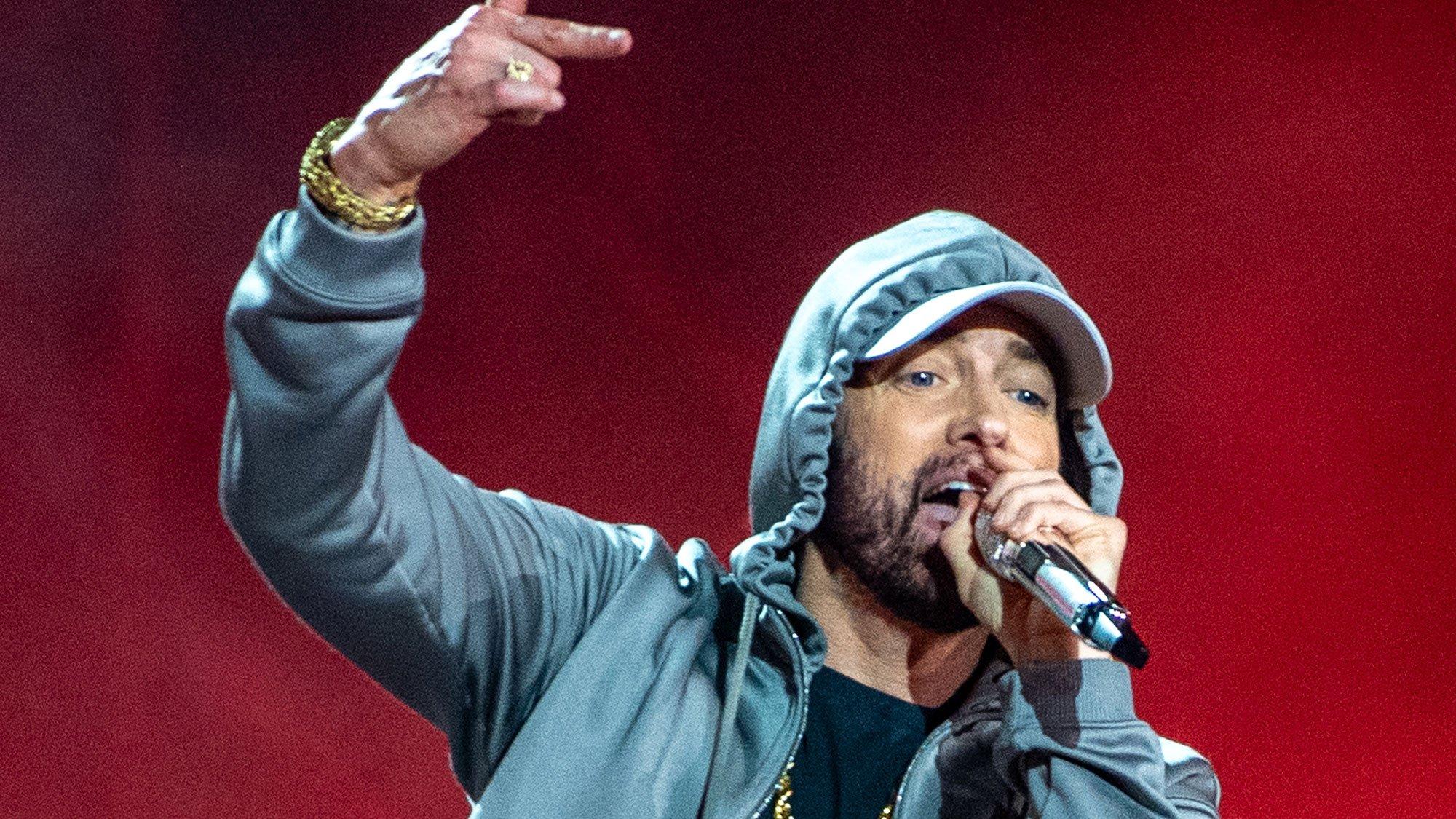
Photo: Aaron J. Thornton/GettyImages
news
New Music Friday: Listen To New Releases From Katy Perry, Eminem, Nelly Furtado & More
As temperatures rise, chill out with these fresh tracks, albums, and collaborations from Nelly Furtado, One OK Rock, Uncle Kraker, and more, all released the week of July 12.
As summer rolls on, more tracks from artists across all genres continue to drop, and we couldn't be more excited. With album releases from John Summit, HARDY, OneRepublic, and Cat Burns to fresh singles from collaborations including Alesso and Nate Smith, July 12 brings a handful of new music to enjoy.
As you stroll through the weekend, make sure to check out these nine musical projects:
Katy Perry — "Woman's World"
Serving as the lead single from 143, her first studio album since 2020, Katy Perry releases "Woman's World," a new pop track celebrating girl power and womanhood. Perry wrote the track alongside songwriter Chloe Angelides and producers Dr. Luke, Vaughn Oliver, Rocco Did It Again!, and Aaron Joseph.
Initially teasing the track through social media, the song drew attention from pop fans globally. The lead single from 143 marks both a comeback and a new era for the American Idol judge. "I set out to create a bold, exuberant, celebratory dance-pop album with the symbolic 143 numerical expression of love as a throughline message," Perry explains in a press statement.
Eminem — 'The Death of Slim Shady (Coup De Grâce)'
Guess who's back? Eminem returns with his twelfth studio album, The Death of Slim Shady (Coup De Grâce). The album appears to be his last project before retiring his notorious alter ego, Slim Shady.
A standout track on the album is "Guilty Conscience 2," a sequel to the 1999 collaboration with Dr. Dre. Leading up to the album release, Eminem dropped two singles, "Houdini" and "Tobey," featuring Big Sean and BabyTron. The album is both a blast from the past and a revived representation of the renowned Detroit-raised rapper.
Nelly Furtado — "Corazón"
Premiering the song at her Machaca Fest set, Nelly Furtado returns to music with "Corazón," the lead single off her new album 7. The track is an upbeat dance song with lyrics in both Spanish and English, along with drums and flutes that bring it to life. The track was two years in the making, according to Furtado on Instagram.
"The essence of the song is that we're just out here living and trying to do our best," Furtado told Vogue. "Even when we make mistakes, it's coming from the heart. When it comes from the heart, it's never a mistake."
7 is set to captivate both loyal fans and new listeners. Centered around the vibrant theme of community, Furtado felt an irresistible pull toward creating new music, inspired by the diverse communities around her. The spirited energy of the DJ community that breathes new life into her pop classics to this day and the passionate online community yearning for her return, spurred by her collaborations with Dom Dolla and Tove Lo and SG Lewis, have both played a crucial role in Furtado's renewed artistic journey.
Clairo — 'Charm'
Amidst the viral resurgence of her 2019 track "Bags" on TikTok, indie sensation Clairo unveils her eagerly anticipated third studio album, Charm. Co-produced with GRAMMY-nominated Leon Michels of El Michels Affair, this enchanting project underscores a striking blend of musical artistry and innovation.
"I want afterglowing, and when I call a car / Send me eyes with the knowing that I could pull it off," she sings in "Sexy To Someone," the lead single from the album. Putting introspective lyricism at the forefront of all her projects without sacrificing quality instrumentals, this album is no exception.
Alesso & Nate Smith — "I Like It"
In this genre-crossing collaboration, electronic artist Alesso joins forces with country singer Nate Smith on their new single, "I Like It." Though an unexpected blend of styles, the song blends elements from both artists' sounds, seamlessly combining country and dance as they proudly declare, they "like it like that."
With Alesso's electrifying instrumentals perfectly complementing Smith's spirited country vocals, the track captures the essence of summer in a song and is set to make waves throughout the season.
One OK Rock — "Delusion:All"
Featured as the official theme song for the upcoming movie "Kingdom IV: Return of the Great General", Japanese rock band One Ok Rock releases "Delusion:All." The upbeat, cinematic track is the band's latest contribution to the "Kingdom" movie soundtrack series, following their 2019 song "Wasted Nights."
"It's been a while since we wrote 'Wasted Nights' for the first series of 'Kingdom,' and we are very honored to be a part of the movie again," said vocalist Taka in a press statement. "We tried to reflect "the various conflicts going on in the world today and the modern society" in the song, while making it blend into the worldview of 'Kingdom.'"
Cat Burns — 'early twenties'
A love letter to her community and a deep dive into the intricacies of adulthood, Cat Burns presents her debut album, Early Twenties. Accompanying the album is a captivating short film directed by Libby Burke Wilde. The film tells the individual narratives of each character, touching on themes of mental health, relationships, and personal identity, mirroring the album's essence.
With this well-rounded creative project, Burns showcases her full artistic prowess, making these releases a testament to her pioneering creative vision.
Uncle Kracker — 'Coffee & Beer'
Making a triumphant return to music after 12 years, Uncle Kracker breaks down the boundaries between genres once again with his latest album, Coffee & Beer. The 13-track album intertwines country, pop, and rock, offering a musical journey that ranges from high-spirited anthems to laid-back, mellow tracks.
"I wanted to give my fans a soundtrack to summer and what's better than the balance of first coffee…then beer? Coffee & Beer is going to be a fun one. Cheers," Uncle Kracker said in a press statement.
Meridian Brothers — 'Mi Latinoamérica Sufre'
Drawing inspiration from the golden era of '70s Congolese rumba, Ghanaian highlife, and Nigerian afrobeat, the Meridian Brothers unveil Mi Latinoamérica Sufre. This concept album integrates the electric guitar into tropical Latin music in an innovative fashion. The album showcases a dynamic tapestry of sounds, blending cumbia, champeta, soukous, Brazilian tropicalia, and psychedelic rock, making it an exciting sonic journey.
Latest News & Exclusive Videos

2024 Paris Olympics Opening Ceremony: Watch Celine Dion, Lady Gaga, Gojira & More Perform

Ice Spice Is The Drill Queen On 'Y2K!': 5 Takeaways From Her Debut Album

New Music Friday: Listen To New Songs From Halsey, MGK And Jelly Roll, XG & More

Watch Young MC Win Best Rap Performance In 1990

The Red Clay Strays Offer A New Kind Of Religion With 'Made By These Moments'
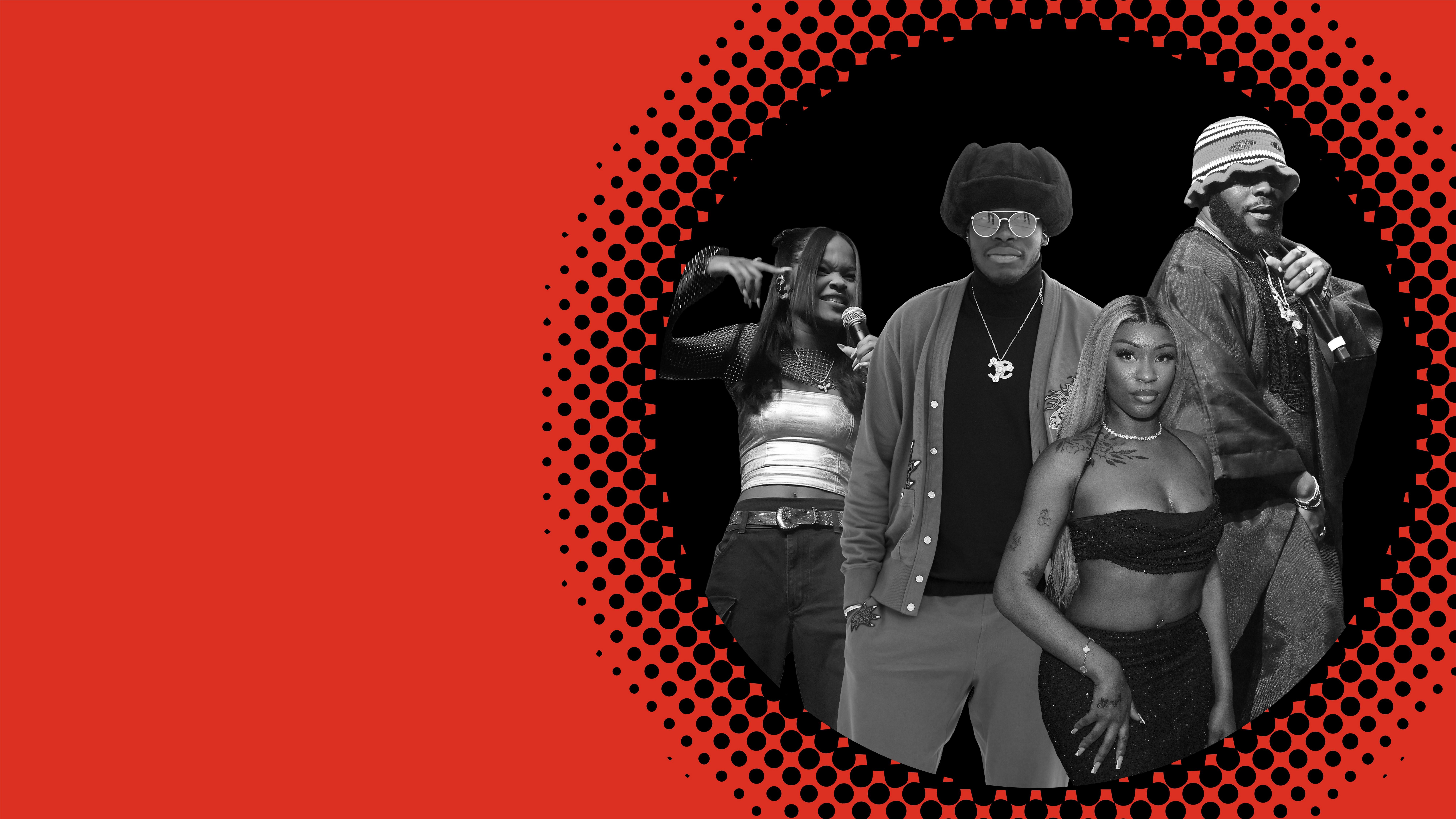
Photos: Taylor Hill/Getty Images; Stephane Cardinale - Corbis/Corbis via Getty Images; Dave Benett/Getty Images for The Standard London; Paras Griffin/Getty Images
list
10 Artists Changing The Face Of Drill: Ivorian Doll, Bobby Tootact & More
While Cash Cobain and Ice Spice bring drill music even further into the mainstream, a new generation of artists are evolving the sound of the genre. From S.Pri Noir and 163Margs, to Lismar and Jay Hound, these 10 acts should be added to your playlist.
Originating in the early 2010s on the southside of Chicago, the hip-hop subgenre drill has transcended borders to become a global phenomenon.
Characterized by a menacing and dark energy, drill music sets itself apart from traditional rap and hip-hop through its violent, aggressive lyrics and undertones. Drill music incorporates slower, heavier beats that often blend distorted 808 basslines, dark synths, and trap-style hi-hats.
The gritty, lawless sound, pioneered by artists like King Louie, Chief Keef, G Herbo and GRAMMY-award winner Lil Durk, remains at the core of the drill. Their influence is spreading to more mainstream acts like Cash Cobain — whose melodic, sultry "Attitude" exemplifies sample drill and landed him at No. 25 on Billboard's Hot Rap Songs — and Ice Spice, whose bold and perky lyrics contrast drill beats. As a whole, these artists are proving that drill is more than just graphic and horrid lyrical stories; it can be fun and even make you feel like a baddie.
Variations on drill music can be heard in regions such as South America, Africa, and Europe. The controversial but incredibly popular UK drill, which was born in the south London neighborhood of Brixton, draws many aesthetic influences from Chicago drill while maintaining its own stylistic differences. Where Chicago drill is heavily influenced by trap music, UK drill can be seen as a type of British gangsta rap, or "road rap." Young UK artists like Digga D and Central Cee have taken over the genre, both scoring entries on the Billboard chart, and with Central landing features with Drake and Lil Baby.
A new generation of drill rappers are continuing to evolve the sound of the genre by combining drill beats and lyrics with a wide range of influences. Read on to learn about 10 budding drill artists whose innovative sounds and diverse perspectives are evolving the global drill landscape.
Explore More: Drill Music Is On The Rise Around The World. Can Latin Drill Take Over Next?
Kenzo B
When it comes to vocal adaptability, attention to detail, and charisma — Kenzo B has got it. The Bronx-born rapper has quickly risen in prominence in New York's drill music scene following 2022 singles "Bump It" and "The Realest," both of which showcased her raw energy and talent.
The self-proclaimed "Queen of Bronx drill" continues to refine her rapid-fire rhymes while maintaining a fierce competitiveness, setting her apart in the male-dominated drill space. In April, Kenzo B teamed up with Harlem rapper Bianca Bonnie to drop their ultra-femme anthem "What You Talkin Bout?"
Wolfacejoeyy
Known for his sexy drill singalongs, Wolfacejoeyy is one of the most exciting rising rappers from NYC’s "forgotten borough," Staten Island. The 21-year-old seamlessly weaves hooky, charismatic rhymes into signature Staten-style instrumentals. On songs like the viral "cake" and "wya," Joeyy taps into an alter ego that teeters between hopeless romantic and relentless f—boy, backed with dynamic hats and a heavy bass.
His highly-anticipated 13-track debut album Valentino, dropped last month and includes a feature from R&B singer Reuben Aziz and production from "Power" actor Michael Rainey Jr., who raps as WhereIs22.
S.Pri Noir
Born to a Senegalese mother and father from Guinea-Bissau, S.Pri Noir is based in France. Despite rapping in French, hip-hop artist S.Pri Noir's music is slowly transcending borders — grabbing the attention of audiences worldwide.
S.Pri Noir’s 2018 debut album Masque Blanc reached No. 18 on the Top Albums chart in France. Earlier this month, he delivered a thrilling freestyle on "On The Radar Radio," channeling his inner Cash Cobain. After a recent Instagram post, fans are speculating a potential collaboration between the two artists will drop soon.
S.Pri Noir represents the next big market in drill: Africa. Many budding artists in the genre, especially from Europe, are second or third-generation African immigrants.
Ivorian Doll
German British rapper Ivorian Doll is making a name for herself in the UK drill scene. Boldly claiming the title "Queen of Drill," she's carving out a unique niche with explosive lyrics, drill-infused tension, and undeniable pop appeal. Each of her anthems is a potent cocktail of drama and attitude, highlighting her razor-sharp signature style that's firmly anchored in unfiltered, hard-hitting lyricism.
The 26-year-old rapper debuted in 2018 as part of a duo, dropping the infectious drill track "The Situation." Since embarking on her solo journey, she's continued to captivate audiences with standout releases like "Queen of Drill," "Daily Duppy" and the buzz-worthy song "Rumour." Her ascent in the drill scene exemplifies a fresh voice bringing new energy to the genre, blending cultural influences with raw talent and unapologetic star quality.
Bobby Tootact
Harlem rapper Bobby Tootact is known for remixing popular Afro-Caribbean songs — from Afrobeats bangers such as Wizkid’s "Joro" to dancehall like Teejay’s "Drift" — into drill tracks with overtly rough lyrics. On 2023's "Real Facts" (produced by go-to mixer Lowkeymali), Bobby raps about gun violence while sampling Wizkid’s popular Afrobeats dance track "Ojuelegba."
As the child of Senegalese immigrants, Bobby's music reflects a fusion of his cultural heritage and his upbringing in Harlem. This combination allows him to create a distinctive musical identity that resonates with fans of multiple genres while merging two completely different musical worlds.
163Margs
Blending gritty lyrics with infectious beats, Nottingham's very own 163Margs has struck a chord with listeners craving traditional UK drill music from a young artist. Margs, who debuted in 2023, has already collaborated with UK heavyweights like Digga D, Bandokay, and Blanco. His debut single "Hide and Seek" propelled him into the spotlight, showcasing his raw talent and captivating flow.
At first listen, his 2024 single, "Barbies" can be confused as an ode to beautiful women, with lyrics like: "All of them Barbie pretty." Listeners later realize the song is actually about guns and street life. "The opps are wet and there's no disagreement / Ayy / fill up the wap / put teeth in."
Odumodublvck
Nigerian rapper and singer Odumodublvck is crafting a lane for himself with an alluring Afro-grime and Afro-drill sound. As a member of the hip-hop collective Anti World Gangstars, Odumodublvck creates high-energy music which features catchy, repetitive lyrics in Pidgin English and his Native Nigerian language (Igbo).
His latest project, EZIOKWU, dropped in October 2023 and includes collaborations with acclaimed artists like Fireboy DML, Wale, and Amaarae — further cementing his position as a rising star in the evolving Nigerian music landscape.
Jay Hound
Jay Hound is an upcoming drill artist hailing from a section of Manhattan's Upper West Side neighborhood and catapulted into the spotlight via his 2023 single "UKRAINE."
A collaboration with his Sweepers labelmate Jay5ive, the track features deep and vibrating bass, and garnered over seven million views on YouTube and nearly 30 million streams on Spotify. He even released an Afro-drill version of the song, which deconstructs the grittiness of the original drill track for a more light and playful dance sound.
Lismar
Dominican singer/songwriter Lismar is dominating the Dominican urban music scene with her contemporary hip-hop and drill rap. Gaining recognition on the Puerto Rican platform Freestyle Mania, Lismar's creativity and distinctive sound of which infuses both Latin and hip-hop music has earned her a growing fan base and a deal with Roc Nation.
In her new released tracks "Delincuente Con Traje" and "BZRP Music Session #60," she captivates listeners with her powerful flow and impactful lyrics that translate to "I look calm / but I was raised on the corner" and "If they close the door / I knock down the window." The rapper dropped her latest single "Mi Primer Concierto," a softer record that seamlessly integrates her Dominican heritage with rap.
Dee Billz
New York-based rapper, Dee Billz, combines bold and unapologetic lyrics while also toying with a Jersey club sound in his 2023 breakout hit "Thootie." The single took the internet by storm and racked up more than a million views across TikTok and YouTube.
Last year, the drill artist collaborated with fellow New Yorker rapper’s Kyle Richh, Jenn Carter, and Tata to release "Stomp Stomp," a single that reimagines Soulja Boy's "Crank That" in a drill style.
Latest Rap News & Music

Ice Spice Is The Drill Queen On 'Y2K!': 5 Takeaways From Her Debut Album

Watch Young MC Win Best Rap Performance In 1990

On Rakim's 'G.O.D's Network (REB7RTH)' The MC Turned Producer Continues His Legacy With An All-Star Cast

5 Ways Mac Dre's Final Living Albums Shaped Bay Area Rap

Denzel Curry Returns To The Mischievous South: "I've Been Trying To Do This For The Longest"
